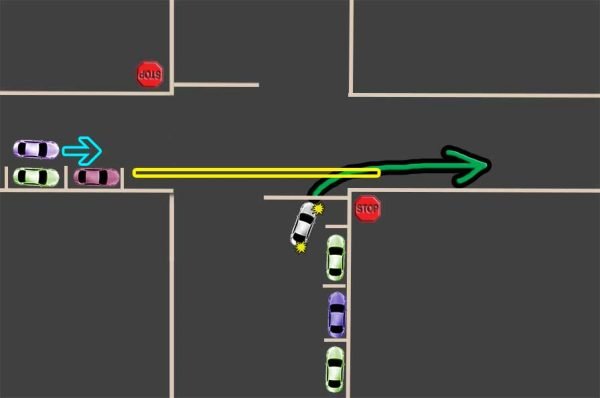Stop Sign vs Stop Line – Welcome to the Driver’s Stop Sign & Stop Line Guide
The stop sign intersection is a common type of intersection in British Columbia. These intersections are often considered not busy enough or not large enough to be controlled by a traffic signal (traffic light). However, they can still be busy and potentially dangerous.
What does a stop sign mean?
The stop sign is a regulation sign, literally meaning “stop your vehicle.” Regulation signs tell drivers about various driving laws and regulations. It is an offense to disregard them. If you don’t follow the instructions on any regulatory sign, you may receive fines or penalties. Check out my article on Canada Road Signs to learn more about the different types of road signs found in beautiful British Columbia or jump over to Intersections with Bad Visibility – Commercial Drive and 14th Avenue to learn about front blind zones and how far you can inch into the intersection to get a better view.
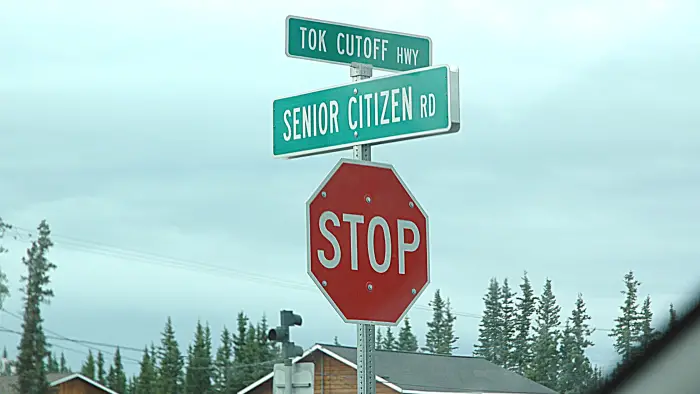
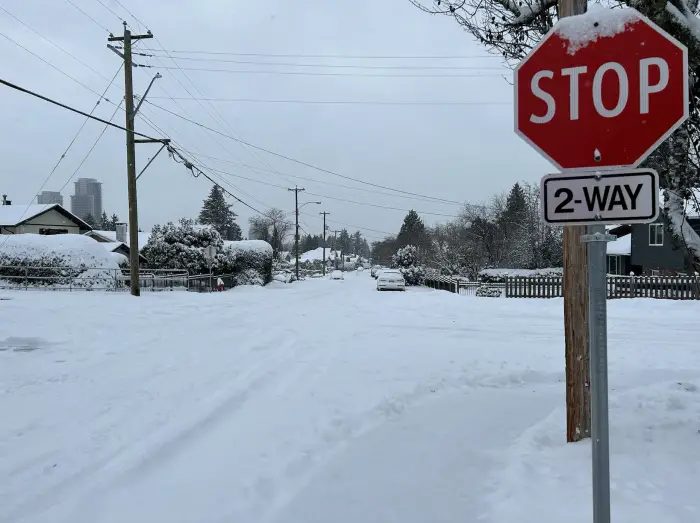
A stop sign always means that you must come to a complete stop. After you have stopped, you must check the intersection carefully. Whether you go or wait depends on the type of intersection and the other traffic around you. Continue only when it is safe to go.
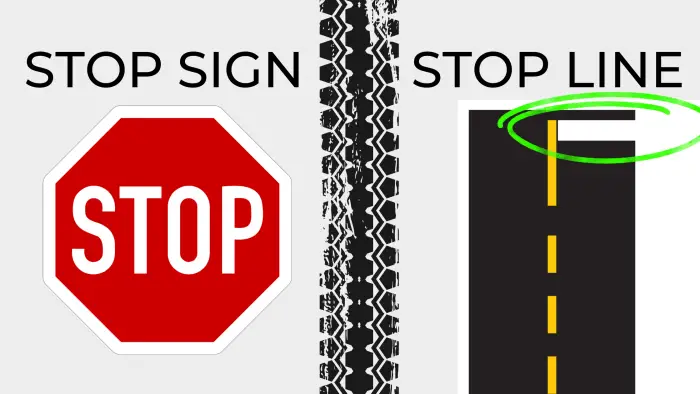
Where to stop at the stop sign?
As a driver, you need to stop at the appropriate place: before the stop line, before the crosswalk, or before the actual edge of the intersection, whichever comes first. Then, you must yield the right-of-way (“that space at that time”) to pedestrians, cyclists, and any approaching vehicles before proceeding. To understand right-of-way better, check out my article Right of Way Rules for Driving: Who Goes First?
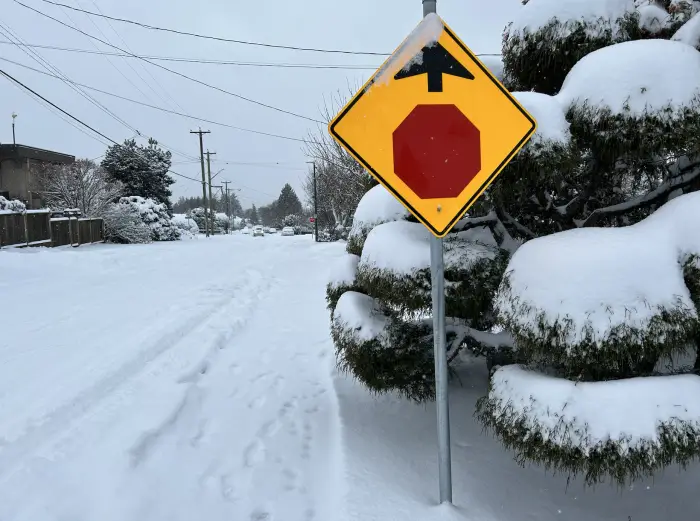
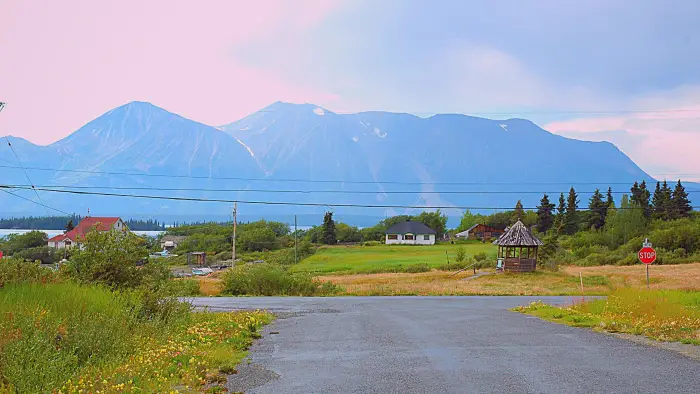
What Shape is the Stop Sign?
It’s good to mention that the stop sign is the only sign that uses this particular shape, the octagon (meaning it has eight sides). Consequently, drivers can use this to their advantage when driving to look for that particular shape from the perspective of the opposing traffic.
This can give you information about whether the opposing or adjacent traffic is facing a stop sign and then you’ll have a better understanding of who should yield to who.
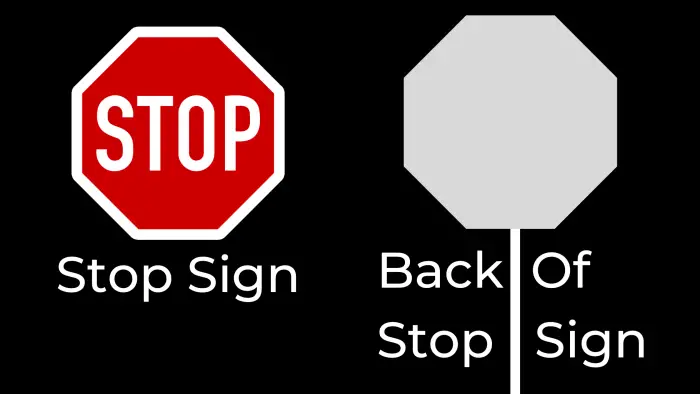
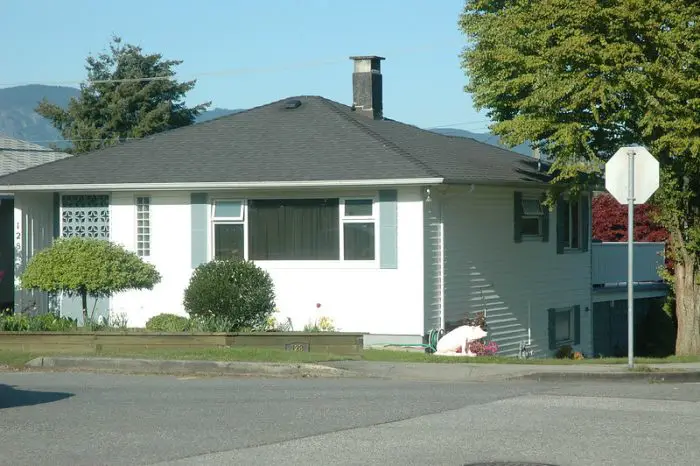
What Color is the Stop Sign?
Stop signs are red and white, which are a few of the regulatory sign colors.
Where Are Stop Signs Located?
Stop signs are commonly located at intersections that are generally smaller compared to other intersections that utilize traffic signal lights. Stop signs are also found frequently in parking lots to control traffic, as well as at the exit driveways from parking lots; which aren’t usually considered intersections from a legal standpoint.
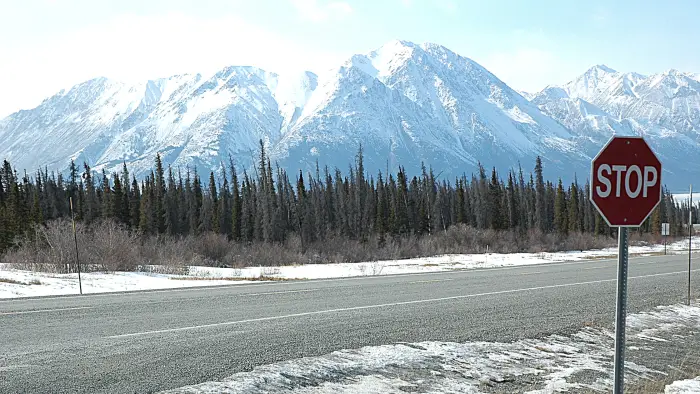
Stop Sign vs Stop Line Rules
Technically speaking, when there is both a stop line and a stop sign, you must stop at the stop line, not necessarily right beside the stop sign.
Sometimes the stop sign is at a slightly different location than the line, for different reasons. One reason is that large trucks turning may need more room, so the stop line may be well before the sign in certain industrial areas.
Or, the stop sign may be located before the line due to visibility reasons.
Let’s go through some typical intersection examples so we can see exactly where to stop for each instance.
When There Is A White Stopping Line
If there is a stop line, stop with your front bumper just behind the line.
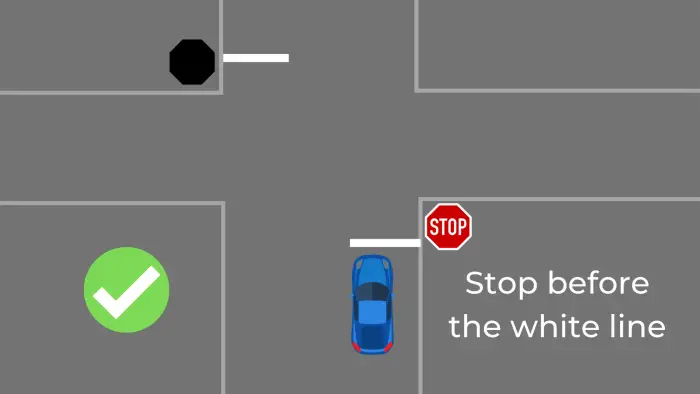
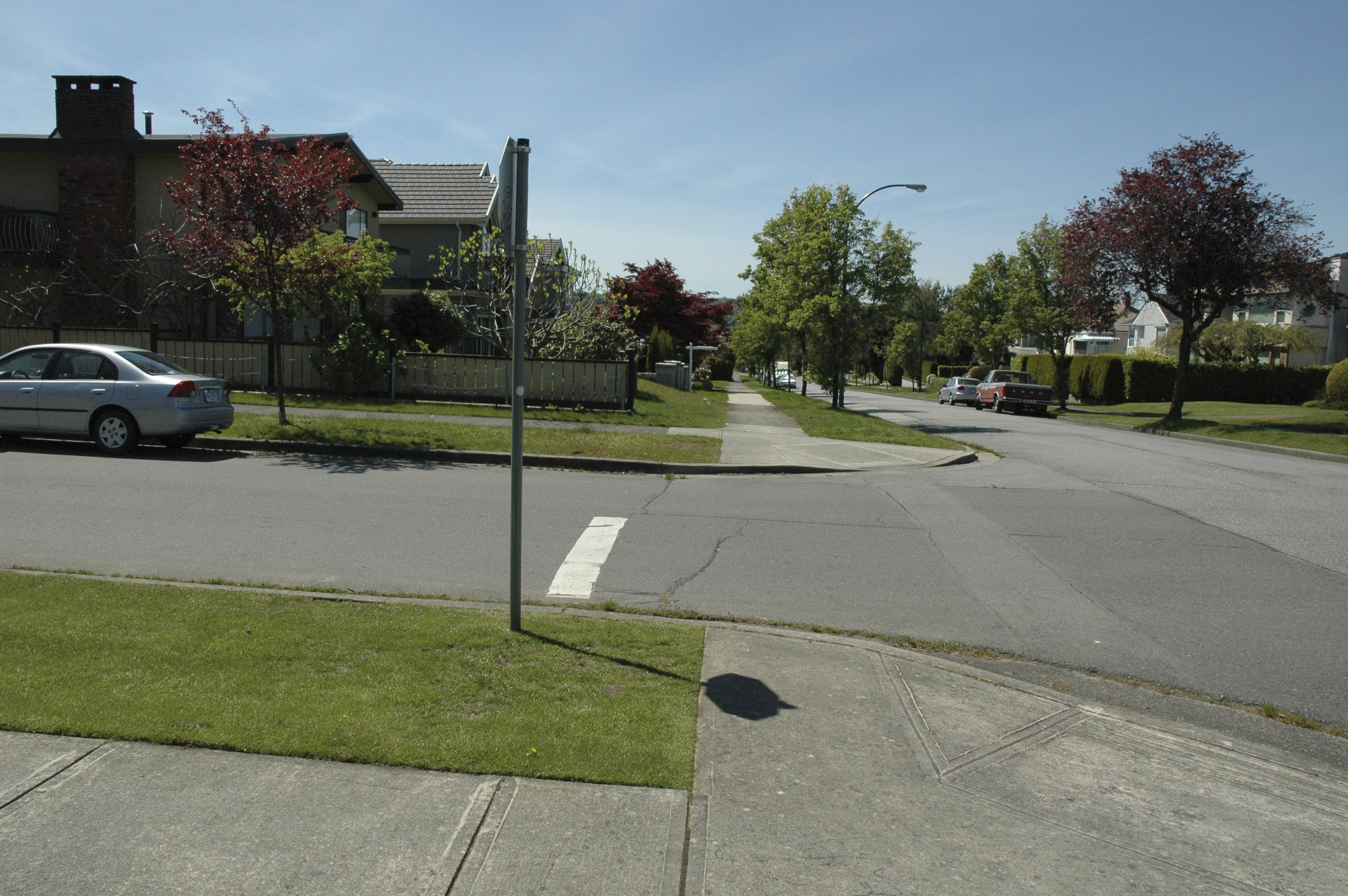
An Intersection Has a Stop Sign Crosswalk But No Stop Line
If you roll up to an intersection that has a stop sign, and a crosswalk, but no stop line, not to worry. If there is a crosswalk, stop with your front bumper just behind the crosswalk. That way, if there are any pedestrians, they’ll have enough space to walk safely in front of your vehicle. If you’re not sure about crosswalks, check out my article What is a Crosswalk? Easy Guide to Marked & Unmarked.


Stop Sign vs Stop Line When There Is an Unmarked Crosswalk
If there is an unmarked crosswalk – basically any and every intersection that doesn’t have “marked” or painted crosswalks, with a few exceptions – stop just before where the crosswalk would be. Usually, this is pretty obvious.
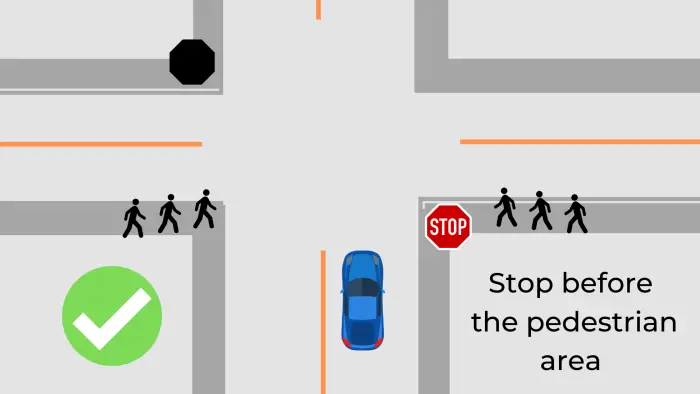
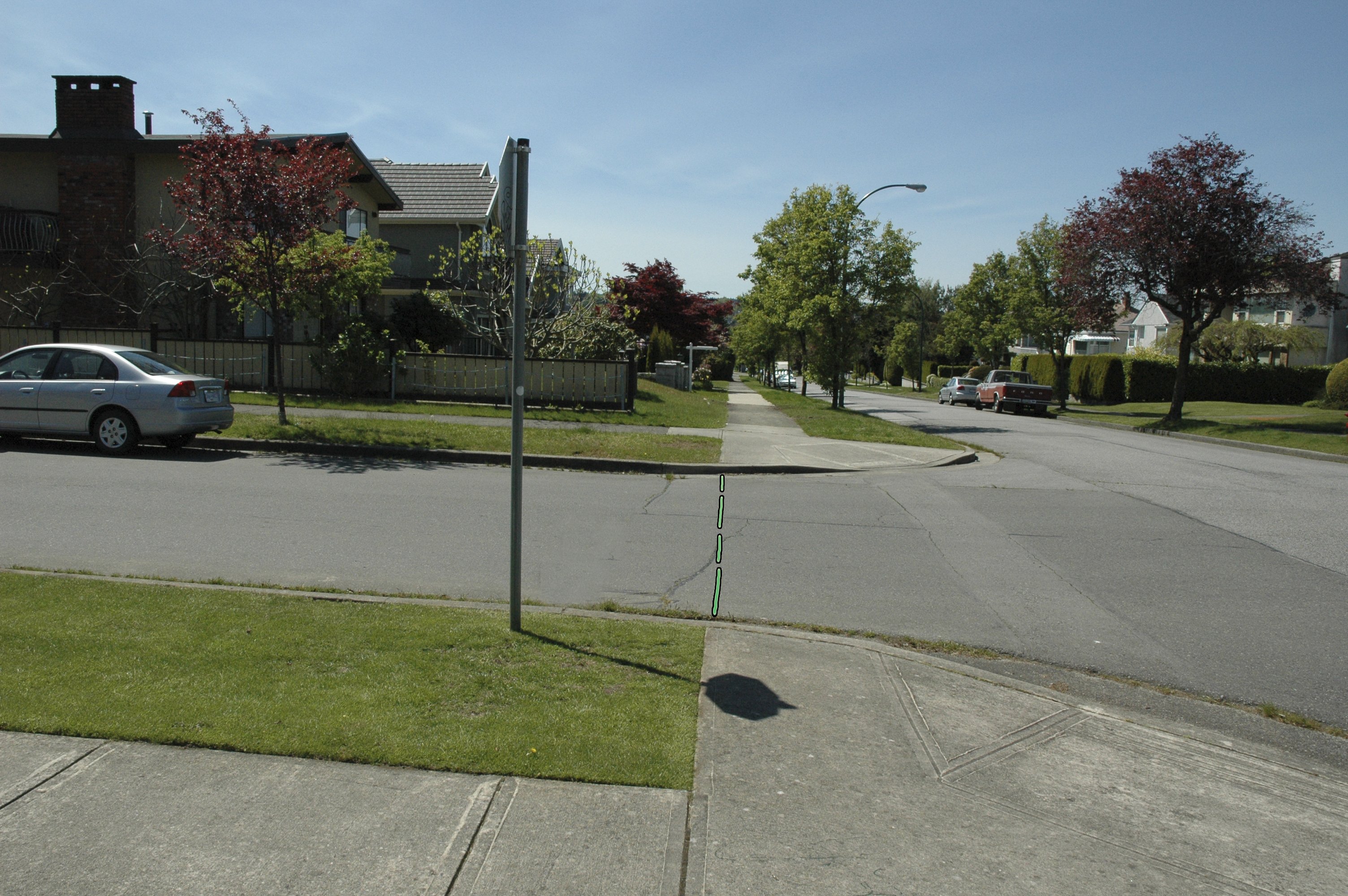
When stopping at a stop sign where there is no crosswalk or stop line, a driver should stop his/her vehicle
If there is no stop line, no crosswalk, and no sidewalk, stop just before the front bumper enters the intersection. The front bumper can be in line with the edge of the curb. Of course, when you’re new at driving you might be thinking, “But I can’t see my front bumper?” This is something you need to get used to.
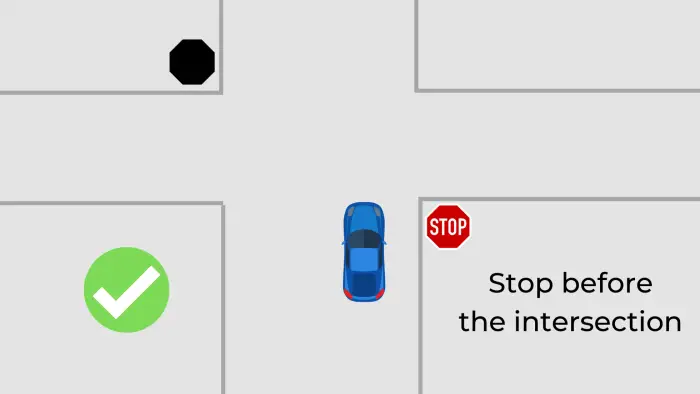
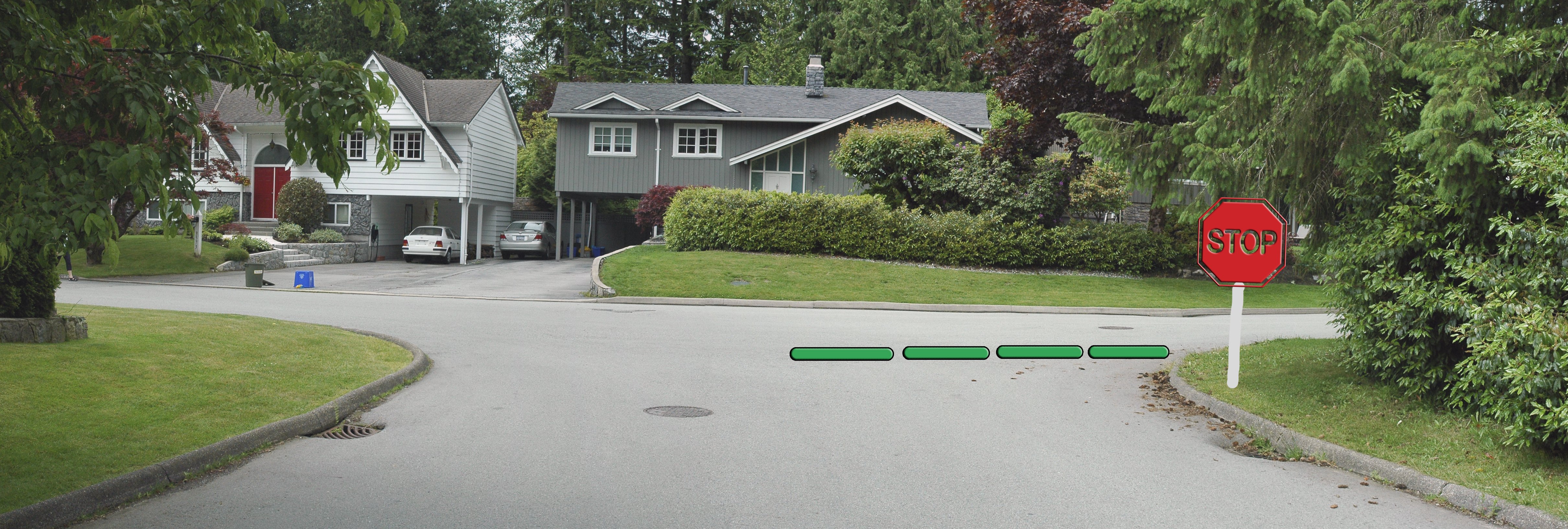
Stop Sign vs Stop Line: Why Stop Where We Do?
Think about the reasons why we must stop before the line
Pedestrian safety, vehicles may be cutting corners, large trucks may be turning, and other vehicles may not be able to see you properly if you stop too far away from the line and/or may become confused as to what you’re doing.
What should you do if you are stopped at a stop sign and your visibility is obstructed?
If, after you stop, you still can’t see properly, then you may inch forward into the intersection if need be. We aren’t playing Russian Roulette. Slowly – snail’s pace – inch into the intersection in order to get a better view.
You’ll need to look both ways, but know that the vehicles on your left are the most immediate hazard compared to vehicles coming from your right; although those ones can have a tendency to cut the corner if they’re turning left.
Stopping Twice at a Stop Sign
Question: Daughter failed her N test. Tester failed her because she would come to a full stop at lines at stop signs, then inch out until she could see clear to go.
Didn’t creep out too far as to impede traffic or anything. He told her she shouldn’t have “stopped” twice? Should she stops past the stop line until she can see, or will the new tester tell her that is wrong too? Confused?
Were they all 4-way stops?
Of course, it depends on the circumstance and intersection. If you stop at the line and have perfect visibility then you should simply stop and check for pedestrians and traffic, and go when safe.
If you don’t have visibility (blocked due to trees or parked vehicles, for example) then you pretty much have to stop twice more often than not.
If the entire test was failed for only this behavior then I am guessing it was failed for too many B4 on the scoring sheet which is a “gap.”
This basically means there was a safe opportunity to “go” and the driver did not take it (they were stopping again unnecessarily or being too cautious).
In the future, the best thing to do is to talk to the examiner after the test if you do not understand something. That way, it is fresh in their mind and if you still disagree, you can ask to speak to the manager and he/she can figure out a better explanation or solution.
But it’s very normal for drivers to “stop twice” because there are so many intersections where you can not see anything traffic-wise from your original stopped position.
The only reason to stop in the initial position (besides that you legally have to), is to make sure pedestrians would have room to walk in front of your car before you then inched forward. And, if vehicles in the intersection are turning onto your street, you won’t be in their way. Be sure to check out my epic article: ICBC Road Test Tips For Classes 5 & 7 [Instructor Gets Deep].
Where To Stop For Pedestrians At a Stop Sign Intersection
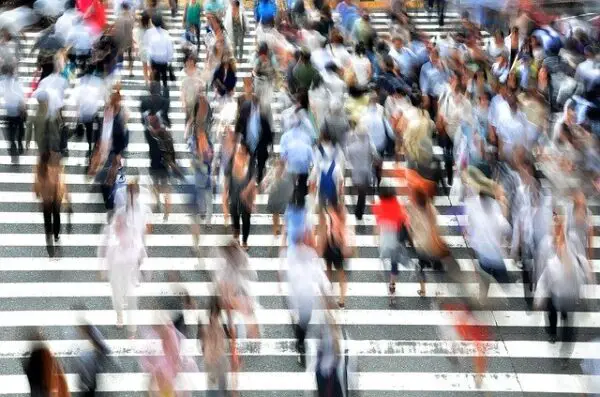
It is good practice to stop well before an intersection when stopping for pedestrians. And yes, every intersection is a legal place for pedestrians to cross the road, unless a sign says otherwise.
One reason is so that a vehicle may be able to move through the intersection without being blocked by you.
Since you are stopping anyway – may as well leave them the opportunity to go.
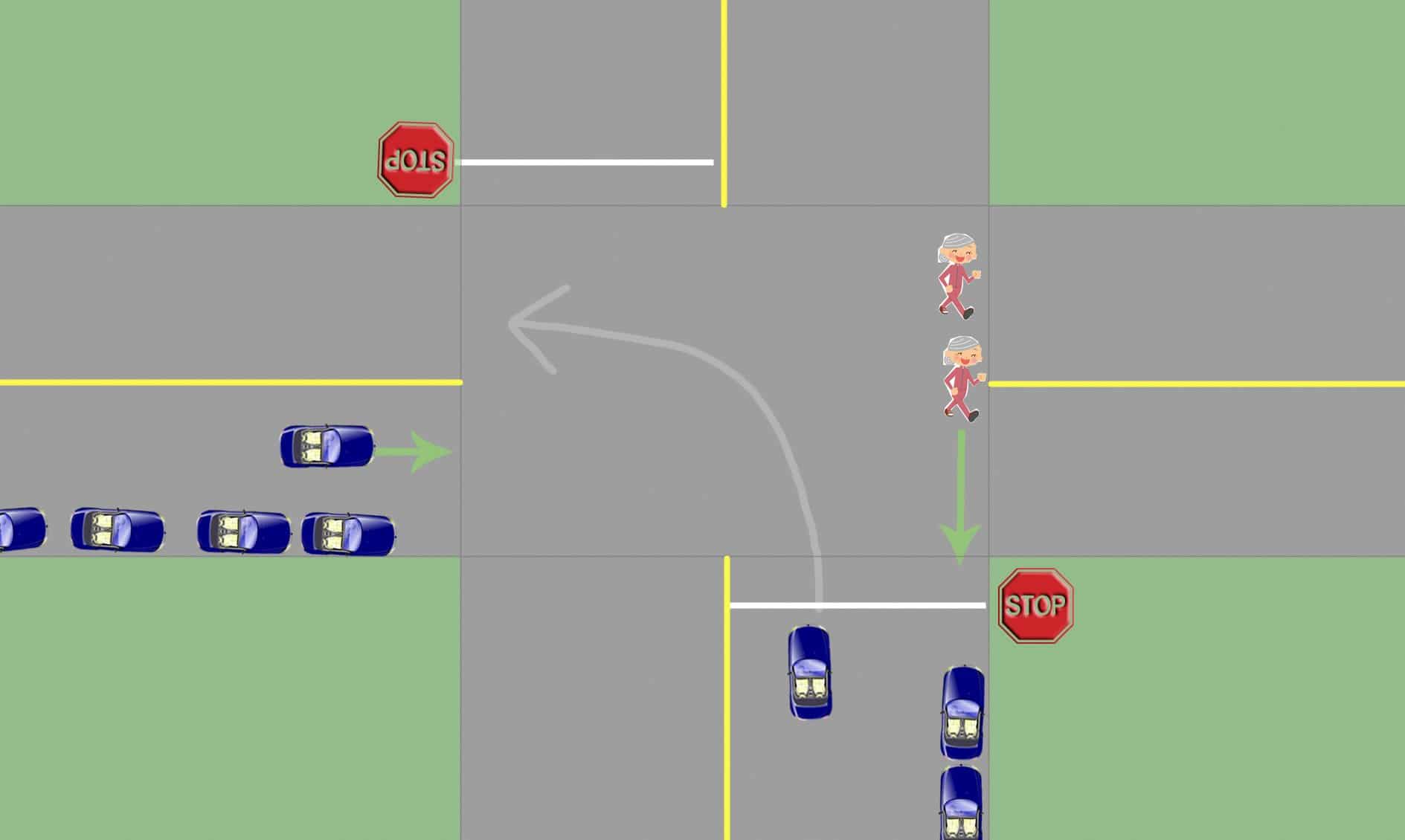
Another reason is to protect the pedestrians in the event you are rear-ended. You have an entire vehicle around you; they do not.
Legally we must completely stop with the front of the vehicle behind the white line
But why?
One of the reasons is pedestrians. Since – generally speaking – every intersection is a legal crosswalk, drivers must stop completely and look both ways for pedestrians who may be about to cross. If there are pedestrians, stay stopped and wait patiently for them to cross.
Another reason is to completely observe that the intersection is safe before moving forward into it
- There may be vehicles about to turn from the thru street
- There may be cyclists
- There may be a left-turning vehicle cutting the corner
- There may be a large vehicle about to do a wide turn
- There may be emergency vehicles approaching
After you’ve stopped and made sure it is safe, you can proceed whenever there are no cars or other road users on the thru street. If visibility is blocked due to shrubs or parked vehicles, you can slowly (snail’s pace) roll forward into the intersection in order to obtain a better view.
Prepare to stop again if you see vehicles & road users on the street. You can roll up to the edge of the parked cars if necessary. You need to keep looking both ways, but be aware that the car on your left is much closer to you than the car on your right.
If there is a vehicle facing you that wants to turn left, which one should go first?
Normally whichever vehicle stopped and then entered the intersection first, should go first. If you entered the intersection at about the same time, the car turning left should yield to the car going straight. However, make eye contact with the driver and remember both needs to yield to vehicles on the street. Use courtesy if unsure.
It is legal to stop beyond the white stop line at an intersection as long as you watch for traffic and pedestrians?
No, it’s illegal to stop beyond the white stop line or stop sign at an intersection. Stop means stop, and if you don’t stop for a stop sign, you’re breaking the law, and subject to penalties and/or fines.
Stop Sign vs Stop Line – A True Story That Went To Supreme Court
Here is a real story about a stop sign vs a stop line. A Richmond, BC man took his stop-sign ticket to Supreme Court, and won.
The man had stopped at a stop sign, rolled past the stop line – which was some 5 feet away from the sign – and received a ticket. The police officer was correct in that the man did not follow proper procedure.
But, the judge agreed that the stop sign was confusing. It was located at a great length from the stop line. This was making the situation confusing for many drivers.
While it’s true we are supposed to stop at stop signs, we are also supposed to stop at the white ‘stop line,’ wherever there is one.
Conclusion on Stop Sign vs Stop Line
Stop signs are everywhere and it’s a basic foundational driving skill to be able to know what to do properly. Some intersections are confusing. Just remember that you’re supposed to stop at the stop line, even if the stop sign is positioned a little bit farther than the line.
You will be tested for stop signs on any road test, of course. It’s good to practice them because there are so many different varieties of intersections, and some are simply easier than others. Be sure to check out how to turn corners, turning right on a green light, tips for turning left at a traffic light, epic guide to turning right on a red light, and 4-way stops.


